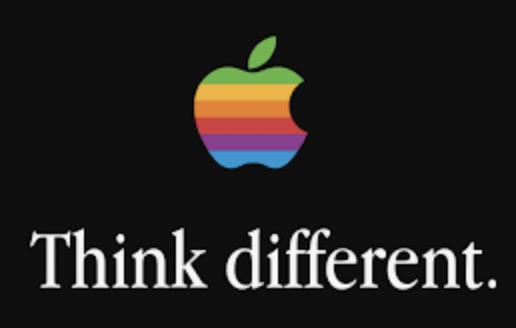We’ve been thinking about marketing all wrong.
It feels weird to come out and say it like that. Because there are about 9,002 so-called “expert marketers” on Instagram (or LinkedIn, or Facebook — take your pick) that will ready their keyboard warrior fingers as soon as they see those words come up on the screen.
But some time in the last, oh, 2000 or so years we’ve forgotten that you need more than just flashy sales tactics to make sales.
That you need more than just bangin’ copy that captures attention.
More than just beautiful branding.
More than just putting out content, content, and more content until your typing fingers are sore and you need a 2 month or so vacation to work through the burnout.
Because while all those “expert marketers” say you need to do more, more, and more to finally hit the revenue goals you have circled on your to-do list…
The riddle of how to talk to your audience in a way that moves the needle and raises the revenue (to the tune of 64% year-over-year growth for a 7-figure company, in fact) was cracked a longgggg time ago.
Like, 2,000 years ago.

Not to bring you back to when togas were rumored to be in fashion, but…
Modern-day marketers have a pretty complicated relationship with the idea of persuasion.
Do we all know that persuasion is the thing that gets people whipping out their wallets?
Yes.
Do we often see businesses fighting that concept tooth and nail, preferring to focus on “building genuine relationships” over going back to the tried-and-true basics of persuasion?
Also yes.
But get ready for the biggest newsflash of the last 2,000 years, because…
You can’t build genuine relationships without persuasion.
You can’t even get someone to listen to you for more than 5 seconds without persuasion.
And you sure as heck can’t get them to buy from you without persuasion.
The problem isn’t persuasion. The problem is that our modern day definition of persuasion is incredibly flawed.
Let’s take this out of sales for a sec
Pretend that you are at a party and you meet Sarah. You like Sarah. Sarah seems super cool. Sarah seems like the kind of person you’d love to chat with for hours, while sipping back a passion fruit margarita with a sugar-salt rim.
(Sidenote: passion fruit margaritas are always the best thing ever. But within 5 seconds of meeting Sarah, you decide it would be even sweeter to drink one with her.)
There are a lot of reasons you like Sarah, ones that go well beyond pheromones.
You like Sarah because:
- She is wearing probably the coolest jacket you’ve ever seen in your life, and your first thought is “wherever she shops, I wanna shop there too.”
- Everything from her easily-given smile to her super-animated hand motions is sending you “this girl has good energy” vibes.
- She’s talking about pygmy goats. And though you’ve always thought you were the only one who believed that pygmy goats are the most underrated small-size animal in the world, Sarah is now echoing your thoughts word-for-word.
- Plenty of people at the party have already said “oh, have you met Sarah??” in a way that makes you believe without reservation that you’re missing out on something if you don’t make this girl’s acquaintance ASAP.

In case you can’t tell, this is a super thinly veiled metaphor.
Because Sarah is not a real person at all. She is a brand.
And everything about that brand, from its…
- Branding that speaks straight to your tastes (the proverbial “cool jacket”)
- Brand voice that draws you in and keeps you engaged (easily-given smile, animated hand gestures)
- Message that feels like it speaks straight to your soul (oh hey there pygmy goats)
- Social proof (in the form of everyone at the party saying “oh Sarah? I LOVE HER!!)
….works through persuasion to make you confident that talking to Sarah (*ahem*…I mean, interacting further with the brand) is the smartest thing you’ve done all day.
Which takes us back to what we 2,000% have failed to understand about persuasion throughout the course of the last 2,000 years
Every relationship we build in our day-to-day lives.
Every conversation we have.
Every act of communication we engage in.
It’s all built on elements of persuasion.
Ones we can harness to build brand loyalty and actually get real revenue growth.
(As opposed to whatever feast-then-famine type results those so-called “marketing experts” over on social media are promising).
And all persuasion? It’s built from the perfectly-balanced blend of 3 things.
I won’t bore you with over two millennia of research on persuasion theory.
But let’s just say Aristotle was a big voice that stood out in the historical crowd. (Yep, Aristotle. Ya know, that dude from Ancient Greece with a cool beard and an even cooler brain.)
Through Aristotle, we began to understand that persuasion isn’t a linear, strong arm them into submission kind of thing. It’s actually the perfectly-balanced blend of 3 things:
YOU + YOUR AUDIENCE + YOUR MESSAGE

YOU have a voice. Use it.
If you only care about what your audience wants (to the point where you totally ignore your unique voice and perspective), it doesn’t make you smart. It makes you a people pleaser.
And while being a people pleaser in sales sounds like a good thing, it’s also the fast-track way to sink into a sea of sameness instead of standing high above the crowd on a profit pedestal.
If Apple hadn’t come out of the gates swinging with their 1984 ad that literally depicted their computer as the hero that shatters the cogs of conformity…would they be the $3.4 trillion company they are today?
Hard to say, but it definitely helped.
As did the “think different” campaign that led them to success from 1997 to 2002, challenging them to break apart from the masses rather than becoming carbon-copies of their competitors. (While challenging their audience to do the same.)

For your own brand, you can use your YOU-ness to increase your conversions by:
- Establishing a brand voice that sets you apart in your market, and makes it easy for your audience to see how you stand above your competition.
- Fronting a fully-defined value proposition that boils down your unique perspective into one short and attractive selling point.
- Having a “why” behind what you do — and wielding it like a high-powered magnet to attract an audience that aligns with your similar values.
YOUR AUDIENCE has thoughts. Speak to them.
When you talk at your audience with little regard for how they feel, you dip into the kind of sleazy used car salesman territory that reads more like manipulation than persuasion.

Which, sure, can lead you to some quick sales. But very rarely will lead you to long-term profit.
(If you charged $1 for your offer starting from today, you can pretty much guarantee that plenty of people will buy. But will you be laughing all the way to the bank while juggling 9,000 clients and expenses that well exceed your earnings? Definitelyyy not.)
The more you can read your audience’s mind in your sales copy, the more you can get them nodding their heads and pulling out their credit cards for purchase.
That’s why any marketing strategist worth their salt will tell you that customer interviews, surveys, and down-and-dirty research aren’t just a check on the “to-do” list, but the way to make your words actually move the needle.
To read your audience’s mind and set down the path for raised revenue:
- Make research the bread and butter of all your business communication.
- Match your brand’s message to what your audience needs to hear. Use your sales copy to repeat back the words, thoughts, feelings that you see communicated through your research.
- Know what they like — then play to it. Not in a way that totally takes away your own voice, but in a way that leaves it no question clear that you see what they need, and are striking the perfect in-between of you and them.
YOUR MESSAGE needs to be nailed. Point blank.
It doesn’t matter if you have the most unique voice in the world. It doesn’t matter if you’ve devoted whole days to audience research.
If you have a message that’s not connecting, your marketing efforts will still fall flat.
Your offer isn’t the thing that your audience buys if you get all the other communication pieces right. It’s the thing that they come to you for. And you need to make it clear why it’s what they need.
Get them reaching for their wallets with a message and offer that:
- Is optimized as heck to make it hard for them to click away, with all the extra goodies, guarantees, and bonuses they need to turn objections into opportunities.
- A clear “why, what, and how” that covers the basics of what your offer is, and goes into all the behind-the-scenes of why it was created and how it will achieve the transformation you promise.
So…why the triangle?
The triangle shows us how sales is a game of balance, not a linear line that takes your audience from first contact straight to the sale.
You can strengthen one of the points. (Like doing the kind of full brand voice overhaul that leaves you with a strong perspective in your market.)
But until all the other points are equally built up strong as steel, you’ll still find your brand struggling to reach its full potential.
Let’s talk about how I can help you do just that. Start the chat, send a honing pigeon, slide a li’l note on my door…this stuff is my jam.